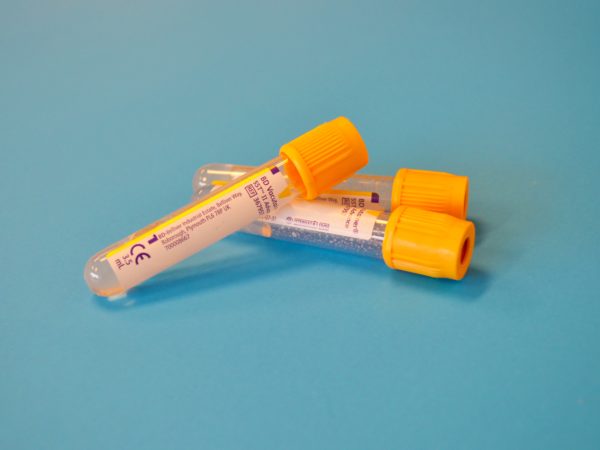In the four decades since the birth of the ‘test-tube’ baby, the field of bioethics has been at the forefront of trying to understand what advancing biotechnologies mean for society, writes Alfred Deakin Institute researcher, Dr Christopher Mayes.
July 25, 2018 marked 40 years since the first baby was born via in vitro fertilisation (IVF), signalling a radical shift in human reproduction. The birth of Louise Brown in Oldham General Hospital, England in 1978 realised the technological capacity to fertilize a human egg outside of the body, opening new possibilities as well as provoking anxieties.
While the medical research team in England achieved the world-first live IVF birth, a team of researchers from Royal Women’s Hospital, Monash University and Queen Victoria Hospital in Melbourne were in close competition. Under the direction of Carl Wood and Alan Trounson, these Melbourne-based researchers achieved the world’s first IVF pregnancy in 1973 and the birth of the third IVF baby in 1980.
Since these dramatic early developments, IVF has become a relatively routine procedure. But it wasn’t just babies being born through the development of IVF; the technology also birthed a new field that became known as ‘bioethics’.
1980s and the emergence of bioethics
IVF created the possibility of fertilising an egg with sperm outside the human body. This procedure addressed a range of infertility problems, such as blocked or damaged fallopian tubes and low sperm count or motility.
It also presented a dizzying array of new possibilities, including: creating embryos from donated sperm, ova, or both; screening embryos for genetic diseases or desired traits prior to implantation; surrogacy arrangements; experimentation on embryonic life; ectogenesis (growth of a baby in an artificial womb); freezing eggs or sperm for future use; and cloning.
The potential for IVF to radically alter reproduction as well as family formation provoked an explosion of conferences, seminars, committees and institutions that sought to address resulting ethical and legal questions.
In 1980, Monash University established the Monash Centre for Human Bioethics with Peter Singer as its founding director. Shortly after, in 1981, the Catholic Archdiocese in Brisbane created the Queensland Bioethics Centre under the directorship of Sr Regis Mary Dunne. These centres sought to educate the public and influence policy debates on the ethical and social implications of developments in biomedicine.
The legal field was also responding to the new developments. In 1982, the Attorney General of Victoria appointed Professor Louis Waller to chair a committee exploring the implications of reproductive technologies in terms of the law as well as legal ethics. This led to the Victorian parliament passing the Infertility (medical procedures) Act 1984, a world-first legislation addressing IVF.
Other states soon followed but the federal government wanted a uniform approach and, in 1985, the Family Law Council released a report titled Creating Children: A Uniform Approach to the Law and Practice of Reproductive Technology in Australia, which detailed a national approach to reproductive biotechnologies.
In 1988, the federal government established the National Bioethics Consultative Committee (NBCC) to address, among other things, surrogacy, information in relation to donated eggs and sperm, and genetic counselling. Coinciding with the release of an NBCC report advising legislation to permit surrogacy, state and federal health ministers disbanded the body. Yet some NBCC members were included on the newly-formed Australian Health Ethics Committee (1991).
During the 1980s, these committees and institutions contributed to the creation of policies and legislation designed to regulate IVF use, and the directions and limits of scientific research – especially in relation to embryos. These debates also contributed to the birth of bioethics in Australia.
Conflicts and disputes
Not everyone was happy with the way bioethics was emerging. A young Kevin Andrews, for example, used his maiden speech in federal parliament to lament that “some of the same personnel from the widely-discredited National Bioethics Consultative Committee” were included on the Australian Health Ethics Committee. And it was not just Andrews who had concerns about the new field of bioethics.
Doctors and scientists were wary of external meddling in their practice and research while Catholic theologians and ethicists were troubled by the devaluing of embryonic life, which they considered sacred. Feminists were suspicious of male-dominated committees deciding what could or could not be done to women’s bodies and the technological control of reproduction, and secular bioethicists were concerned by the real or apparent influence of the Church. Politicians, meanwhile, were worried that committees they had created were now undermining their role in creating legislation.
These concerns over bioethics and the direction of biomedical research were intimately tied to fears and hopes about future society. Were we heading towards a utopia or dystopia?
Unforeseen or ignored developments?
Although its physical and psychological burdens are not widely discussed, IVF has become standard procedure. In 2014, 12,875 babies were born via IVF in Australia. While the procedure is relatively common and largely accepted as an ethically acceptable form of reproduction, questions from the earliest debates remain.
Catholic and radical feminist commentators were the most vocal critics of the new reproductive technologies. At times these seemingly divergent perspectives overlapped, particularly in regard to concerns relating to technological and corporate control of reproduction.
Catholic leaders were primarily concerned with the moral status of embryos, whether IVF contravened “laws of nature” and the separation of the sexual act from reproduction. These concerns did not gain much traction among policymakers or laity – polls in the early 1980s revealed 67% of Catholics surveyed approved of the practice and that a proportionate number of Catholics were on waiting lists to access IVF.
The feminist critique of reproductive medicine drew attention to areas largely ignored by the majority of ethicists, scientists and politicians. Robyn Rowland and Renate Klein from Deakin University were leading voices in calling attention to the influence of commercial values on the motives and ethics of clinicians. In the early-1980s, Robyn Rowland argued that IVF physicians look “less altruistic as their efforts to generate profits intensify” and queried the secrecy over a new commercial enterprise developed by the early Melbourne-based researchers and Monash University.
Rowland argued that “a collaboration between research and commercial interests uses women in essentially experimental programs and asks the participants and the public to underwrite the expense so that the researchers can enter into commercial contracts for profit.”
In 2014, Monash IVF floated on the stock market for over $300 million dollars. In writing a history of IVF in Australia, John Leeton, who was part of Carl Wood’s team at Monash IVF, characterized Rowland’s criticisms as “extreme and misguided”. Yet in light of the enormous profits enjoyed by fertility clinics, as well as the distorting effect of commercial interests, Rowland’s critique remains relevant today.
The listing of companies such as Monash IVF and Virtus IVF on the stock exchange not only means that they operate at a profit for shareholders, but also have an obligation to continually seek profits and new markets.
In recent years, social egg freezing (SEF) has been regarded by commercial IVF companies as opening up new lucrative markets. While IVF primarily focuses on women and couples with infertility problems, SEF is the practice of freezing unfertilized eggs so women may use them when they have found the right partner or achieved certain career or educational goals. The practice is marketed as an “insurance policy” that allows women to put off concerns about their “biological clock”.
There is an ongoing debate about the efficacy and ethics of this practice. But one thing that’s clear is all women between puberty and menopause are now seen as potential customers. There is limited data available about who is using these services and when. Fertility clinics suggest that it is ideal for women to freeze their eggs in their 20s and early-30s. However, data from the UK Government’s independent regulator reveals that 68% of women using SEF are over 35.
The expansion of fertility clinics into SEF raises questions about the changing reality of biomedical practice – is it simply a commercial relationship where the logics of “buyer beware” operate? Or is a medical relationship where professionals have an ethical obligation to their patients?
Neither utopia nor dystopia
The commercial dimension of biomedicine rarely featured in the bioethical debates of the 1980s. But biotechnology is now a lucrative industry that’s attractive for investors.
Commercial influences on the development of IVF – and its expansion into questionable markets – should not diminish the amazing achievements 40 years ago. We have not entered the dystopia that many feared; but nor have we reached utopia.
It’s this space in-between that bioethicists continue to work in, questioning developments of biomedicine and new technologies, such as CRISPR, commercial surrogacy, personalised medicine and artificial intelligence.
By Dr Christopher Mayes, Research Fellow (DECRA), Alfred Deakin Institute
Published by Deakin Research on 7 August 2018



